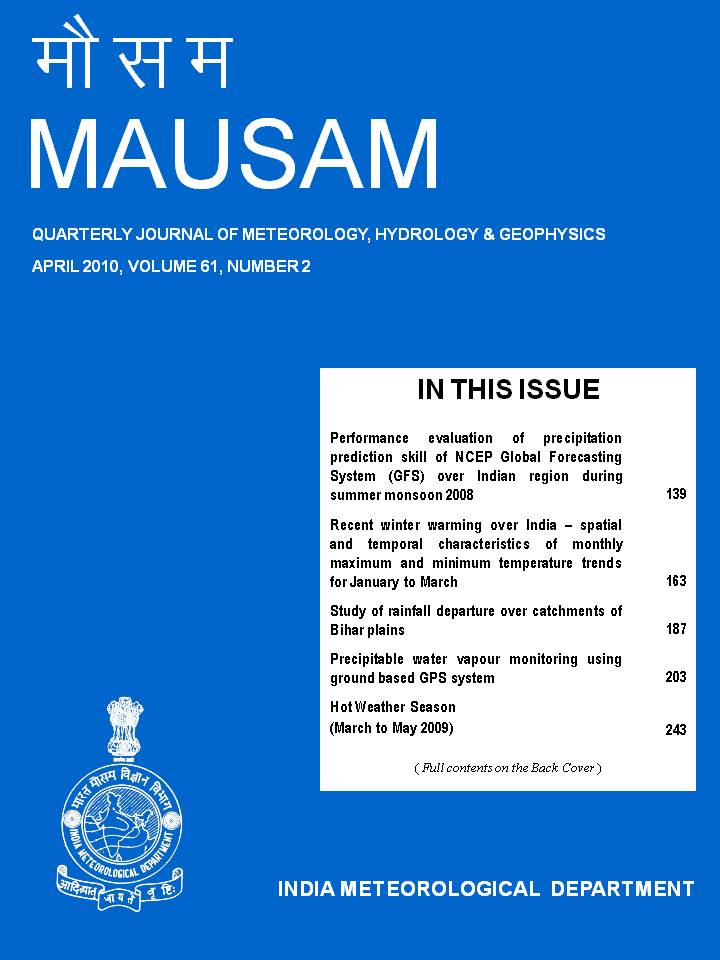Performance evaluation of precipitation prediction skill of NCEP Global Forecasting System (GFS) over Indian region during summer monsoon 2008
DOI:
https://doi.org/10.54302/mausam.v61i2.795Abstract
The study provides a concise and synthesized documentation of the current level of skill of the NCEP GFS day-1 to day-5 precipitation forecasts during Indian summer monsoon of 2008, making detailed inter-comparison with daily rainfall analysis from the use of rain gauge observations and satellite (KALPANA-1) derived Quantitative Precipitation Estimates (QPE) obtained from IMD. Model performance is evaluated for day-1 to day-5 forecasts of 24-hr accumulated precipitation in terms of several accuracy and skill measures. Forecast quality and potential value are found to depend strongly on the verification dataset, geographic region and precipitation threshold. Precipitation forecasts of the model, when accumulated over the whole season, reproduce the observed pattern. However, the model predicted rainfall is comparatively higher than the observed rainfall over most parts of the country during the season. The model showed considerable skill in predicting the daily and seasonal mean rainfall over all India and also over four broad homogeneous regions of India. The model bias for rainfall prediction changes from overestimation to underestimation at the threshold of 25 mm/day except for day-1 forecast. Model skill falls dramatically for occurrence rainfall thresholds greater than 10 mm/day. This implies that the model is much better at predicting the occurrence of rainfall than they are at predicting the magnitude and location of the peak values. Various skill score and categorical statistics for the NCEP GFS model rainfall forecast for monsoon 2008 are prepared and discussed.
Downloads
Published
How to Cite
Issue
Section
License
Copyright (c) 2021 MAUSAM

This work is licensed under a Creative Commons Attribution-NonCommercial 4.0 International License.
All articles published by MAUSAM are licensed under the Creative Commons Attribution 4.0 International License. This permits anyone.
Anyone is free:
- To Share - to copy, distribute and transmit the work
- To Remix - to adapt the work.
Under the following conditions:
- Share - copy and redistribute the material in any medium or format
- Adapt - remix, transform, and build upon the material for any purpose, even
commercially.



